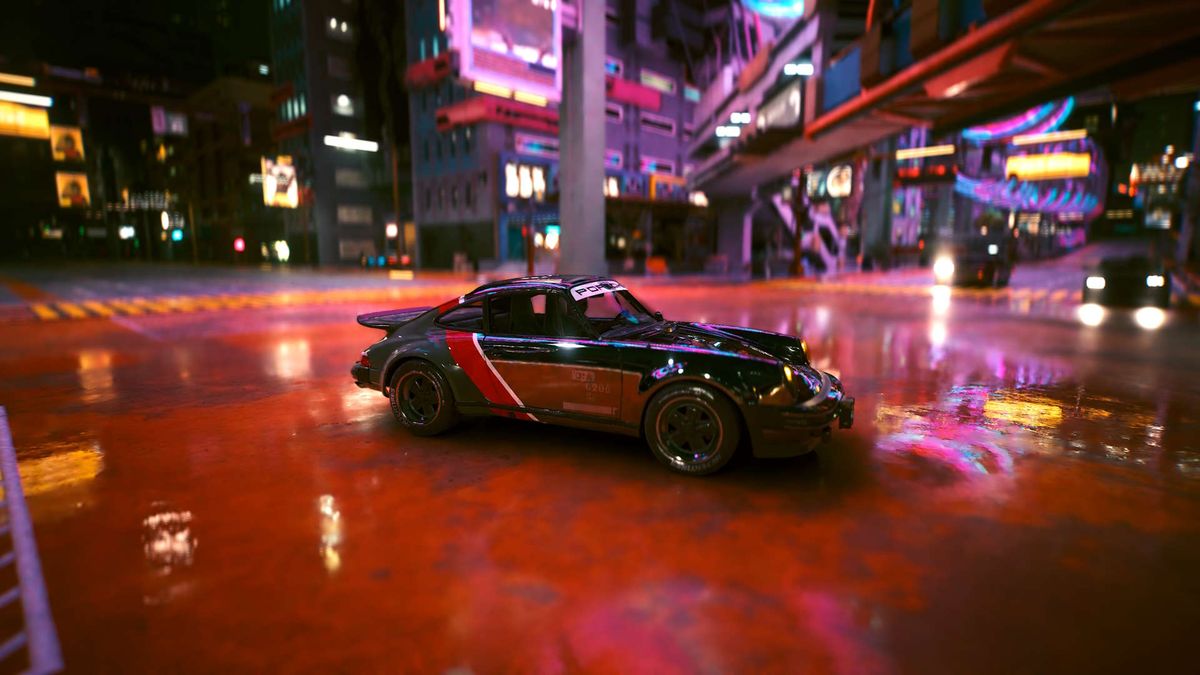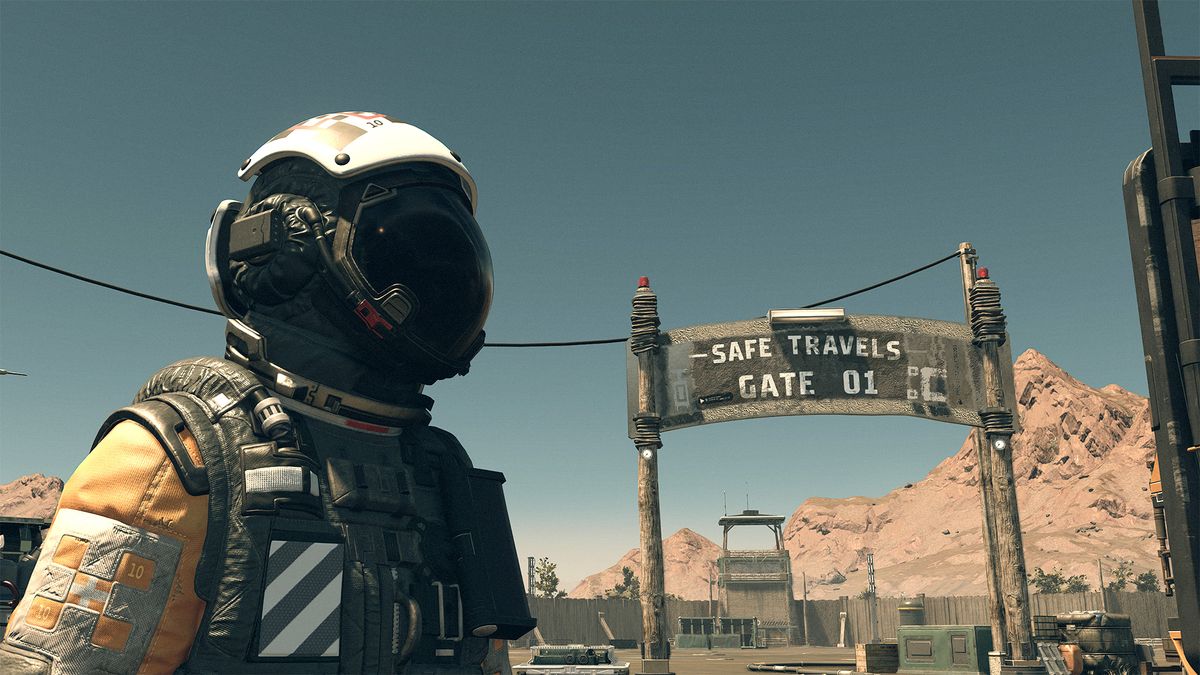remember not working for PC gamepass version
That one? Or dlss mods in general? If so, the other dlss mods are working on gamepass.
Please remember that any mention of competitors, hinting at competitors or offering to provide details of competitors will result in an account suspension. The full rules can be found under the 'Terms and Rules' link in the bottom right corner of your screen. Just don't mention competitors in any way, shape or form and you'll be OK.
remember not working for PC gamepass version
DLSS 3.5 looking good.


Yup it was a great video, obviously very pr orientated but 100 times better than any of amds videos where it just felt like a script and more to push their hidden agenda.They're just like us, regular guys but getting paid loads to do what they enjoy
It also helps that it wasn't a pre-scripted discussion and all questions even talking about games that aren't DLSS supported were on the table.
Just guys being dudes
The biggest takeaway is that nvidia are very pro PC modding, and Bryan's comment about seeing how far modders can go especially if they can inject DLSS3.5 into games, would be a very proud moment. He also noted that Nvidia could be better by providing modders with better documentation on how to integrate such technologies easier too.

Error in his testing. Reconstruction won’t give that big of a jump.
And videos with the driver update and 2.0 up now:Based on my testing, when you're above 60 fps, you either need lightning quick reactions or/and extremely perfect eye sight to be able to pick out the latency and artifact issues.
I've done some prep for tomorrow out of curiosity for a 3080 how performance will improve or decrease using settings you would actually have to use for a playable experience so one ray tracing with balanced dlss and path tracing with dlss performance:


Also got videos recorded and uploading.
EDIT:
And uploaded:

So far we've only been able to get a relatively small impression of Nvidia's latest feature. However, this one is magnificent. The path tracing graphics in Cyberpunk 2.0 are significantly improved, and previously occurring artifacts are significantly reduced. Aside from Gamescom, DLSS 3.5 can currently only be found in the graphic hit from CD Projekt RED; so far no other game offers support. Of course, it's also a bit of a shame that Ray Reconstruction in Cyberpunk only works with overdrive path tracing. Since the full splendor of the rays is so demanding, frame generation is almost a necessity in order to achieve smooth frame rates in reasonably high resolution. This circumstance means that you can take a trial course with an older Nvidia GPU, but the graphics splendor is only playable to a limited extent. So you still want a new graphics card, the best would have course be an RTX 4090. So DLSS 3.5 in Cyberpunk 2077 leaves a little potential behind, it would have been nice if you could also refine the regular ray tracing with the new Nvidia de-noising . But maybe something will happen at this point and of course more games will follow.
We will look at Cyberpunk, path tracing and the Phantom Liberty add-on more often, carry out further tests and test DLSS 3.5 in other games as they appear. And even if there are a few little things here and there that could be improved, the Ray Reconstruction definitely convinced us. The graphical improvements are sometimes massive, the artifacts in the path tracing display that have bothered us on several occasions almost disappear, and the performance costs are - based on our current knowledge - negligible. If you have a graphics card that supports DLSS 3.5, there is little reason not to add it. Assuming you have a suitable game and currently this means: enough power for overdrive path tracing in Cyberpunk.


Could be interesting if true, Frame Generation working on older 2000 and 3000 series cards in Portal Prelude RTX -
Reddit - Dive into anything
www.reddit.com
EDIT
Nvidia saw it and released a statement, TLDR, It does nothing, Just a bug.
Duplicating the frames?
So, double the frame rate!!!
Wow, I luv Nvudia tech!

The default anti-aliasing method for AMD's and Intel's GPUs in Alan Wake is FSR 2.2, which has a very unstable image quality across all resolutions specifically when running at native resolution. At the time of writing this review, the FSR 2.2 implementation at native resolution is completely broken, producing a very high amount of shimmering and flickering issues on the whole image across all resolutions, even when standing still. The look of RT reflections also becomes very shimmery and pixelated, especially in motion, and only Screen Space Reflections (SSR) will have a more stable look when FSR 2.2 is running at native resolution. Something is definitely wrong with the native implementation of FSR 2.2 because going down from native rendering to FSR 2.2 "Quality" mode results in significant reduction of these shimmering and flickering artifacts, however, it does not remove these issues completely.
The quality of upscaling component in the FSR 2.2 implementation also comes with noticeable compromises in image quality and has several major instabilities: incomplete image details in the distance with constant flickering on thin objects in motion at lower resolutions, such as 1080p, ghosting and disocclusion artifacts around the main character or NPCs, a noticeable shimmering and flickering in motion on vegetation, power lines and thin still objects, and a blurry and incomplete look of most in-game particle and volumetric effects across all resolutions and quality modes. Compared to the DLAA solution, the anti-aliasing quality of FSR 2.2 is also inferior, as the overall image has more jagged lines in motion, especially visible on small particle effects during combat and in vegetation.
Speaking of DLAA and DLSS Super Resolution, the DLSS Super Resolution implementation offers the best image quality across all resolutions and quality modes when upscaling is enabled. Compared to the DLAA solution, with DLSS in "Quality" mode you can expect a sharp overall image with perfect stability on small particle and volumetric effects in motion, a stable image in motion with almost unnoticeable loss in rendering of the details on power lines, thin still objects, tree leaves and vegetation in general, and the absence of any form of shimmering or flickering artifacts. Surprisingly, compared to DLSS, the DLAA solution in Alan Wake 2 does not offer a significant boost in overall image quality across all resolutions, like it does in other games that we've tested, so in this game we recommend to stick to DLSS in "Quality" mode for the best image quality and performance.
The DLSS Frame Generation implementation in Alan Wake 2 is excellent, producing a stable and crisp image without any jittering issues on the in-game on-screen UI, the area where DLSS Frame Generation often has issues. Small particle effects, such as rain, are rendered correctly, even during fast movement. The hair rendering on the main character and NPCs also has perfect stability in motion. Also, the DLSS Frame Generation implementation in this game has the ability to use Frame Generation with DLAA. During our testing, overall gameplay felt very smooth and responsive, we haven't spotted any issues with input latency.
Currently Alan Wake 2 is the second game to officially support DLSS Ray Reconstruction and this technology impressed us the most. It is important to note that unlike Cyberpunk 2077, DLSS Ray Reconstruction in Alan Wake 2 can be combined with DLAA and is not limited to path tracing only, which means that you can use it with ray tracing as well. However, when combined with ray tracing instead of path tracing, the benefits from Ray Reconstruction will come at a performance cost. Speaking of image quality, DLSS Ray Reconstruction greatly enhances the quality of RT effects, producing improved details in RT reflections across all resolutions, especially in motion, which results in increased sharpness of some reflective materials, such as the road after the rain, for example. The quality of RT shadows is also affected, changing the appearance of RT shadows at close range and improving the details, stability and sharpness at far distances. The direct and indirect lighting with Ray Reconstruction becomes more responsive, and the quality of the lighting is noticeably more accurate and realistic, greatly improving the overall experience.
Also, the DLSS Ray Reconstruction technology fixes some of the artifacts present in the standard denoising solution (NVIDIA Real-Time Denoiser) for ray tracing and path tracing, such as black smearing and ghosting on some moving objects in low contrast scenes, shimmering, and pixelation in motion on chain link fences. Overall temporal stability and visual clarity on thin objects and other finely detailed items is significantly improved, eliminating distracting artifacts during gameplay. And the most impressive part of the Ray Reconstruction technology is that all of these image quality improvements and fixes to image stability come with a nice performance boost across all resolutions, which definitely helps cushion the performance penalty of enabling path tracing.
Hold hat thought, Ratchet & Clank is so far my number one with essentially zero visual flaws - Alan Wake 2 is amazing, but it has some flaws in its rendering that are visible upon scrutinuy, but Ratchet I had a very hard time finding anything wrong with the graphics, in most cases it looks better than a Pixar movie lol.
Hmm an NVIDIA technical partnership making fsr2.2 look bad. Shock horror. Just saying I do often wonder if some of this is done on purpose. I mean who'd do a technical partnership if it accidentally made a competitor technology more preferable right. No fsr 3 in Alan wake 2?
I don't think there's any foul play here, it's just that FSR is well documented at being crap, until AMD and the dev work together to implement FSR properly to the most extent (Callisto protocol for example) - But a lot of the time AMD can't even get their own sponsored games with FSR right, Starfield being one of the latest examples in a growing list of FSR quality issues.
AMD is the issue here, not the devs or Nvidia, otherwise we'd see the opposite on AMD sponsored games, but we don't, in fact modders injecting DLSS into AMD games end up making the game look and run better with modded DLSS than native FSR
My worry is we have reached the best FSR can do. They need to consider doing something either better or something that uses hardware.
I would rather them do something with hardware that only works on their cards than stay with FSR as it is.
As I said before, I can by with their weak arse RT being a gen or so behind. But to be behind on RT and FSR. That is just too much.
Nothing premium about that. So they need to forget about being a premium brand now. 7900 XTX should have been called 7800 XT and be priced £599. That is what I think that card was worth on release. Would have sold very well at that price too.
For Hogwarts it's a shame the RT FX were quite lackluster especially the reflections.



